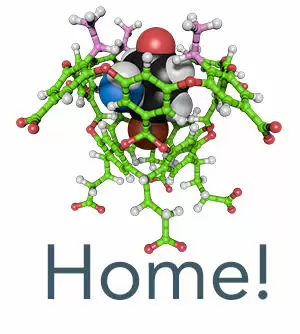Kaanumalle, L. S.; Gibb, C. L. D.; Gibb, B. C.; Ramamurthy, V. Controlling Photochemistry with Distinct Hydrophobic Nanoenvironments. Journal of the American Chemical Society 2004, 126, 14366-14367.
A combination of hydrophobic forces and guest templation drive the assembly of cavitands into molecular capsules. Encapsulated guests such as dibenzyl ketones reside in an essentially dry environment, and upon irradiation, undergo rearrangement processes that are templated by the shape of the 1 nm × 2 nm cavity.

